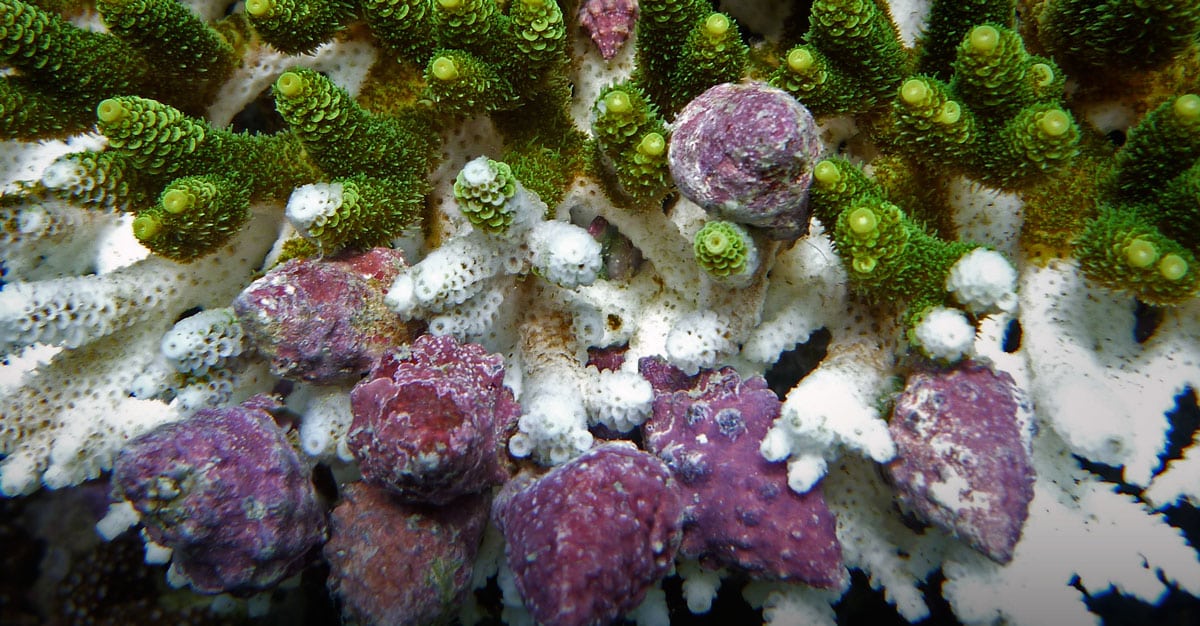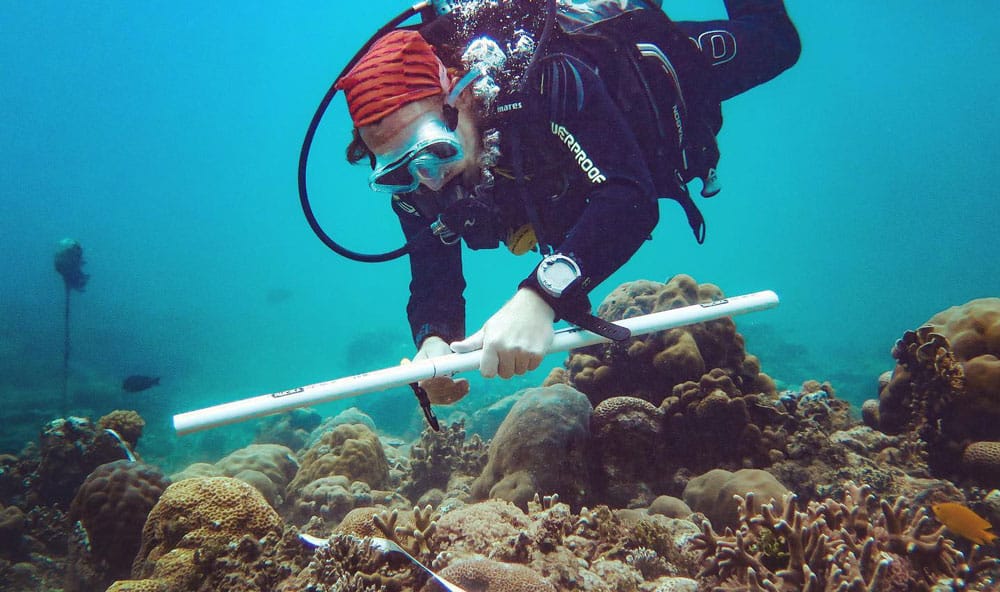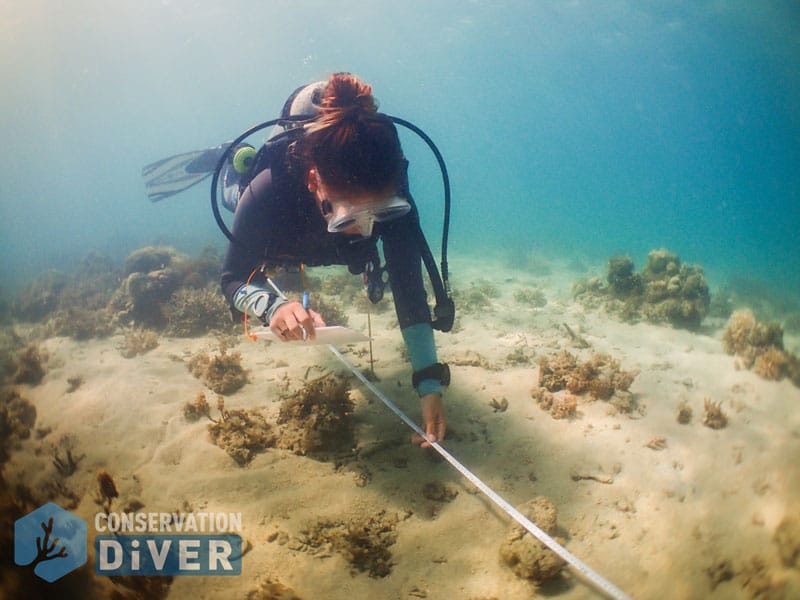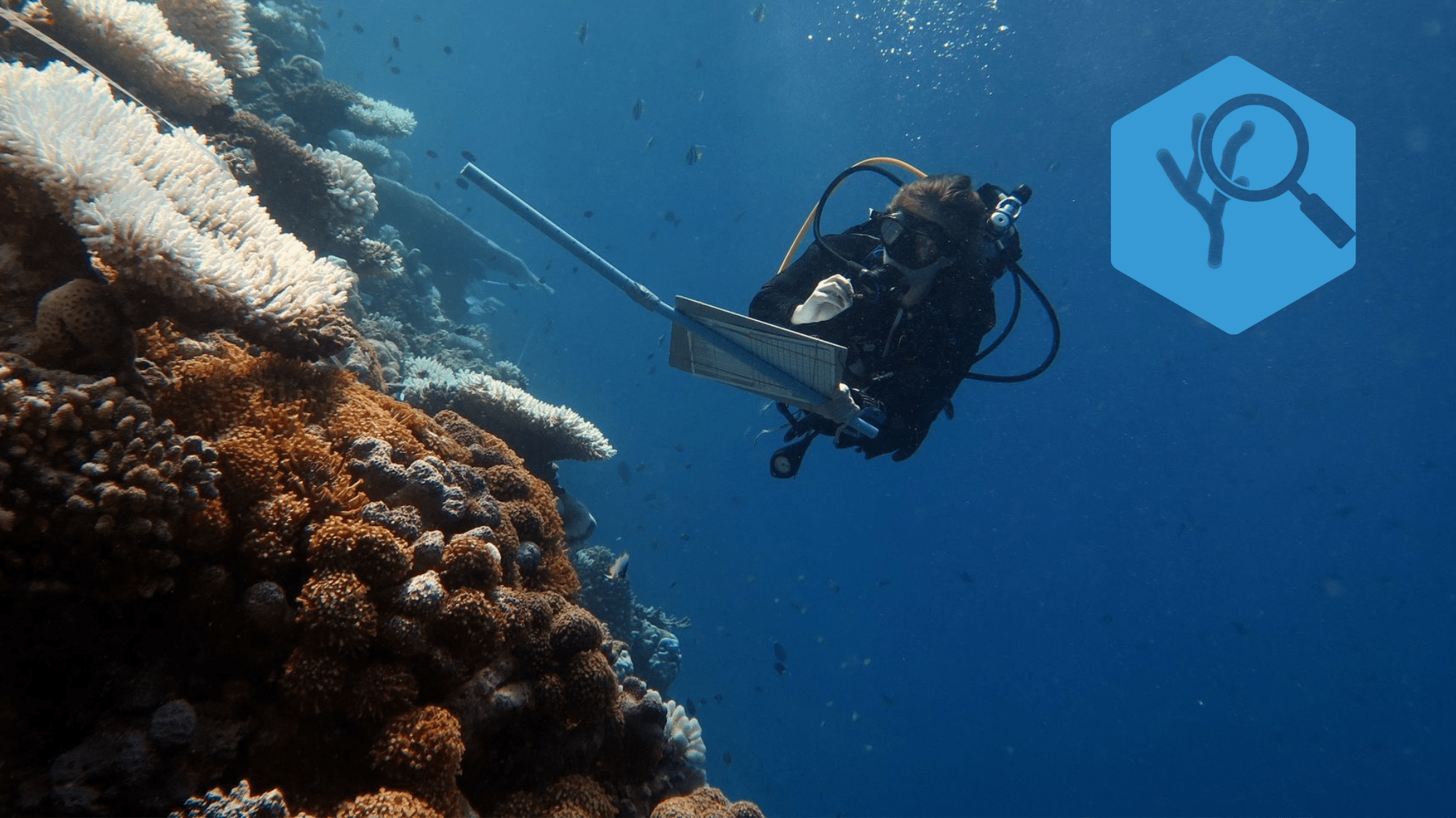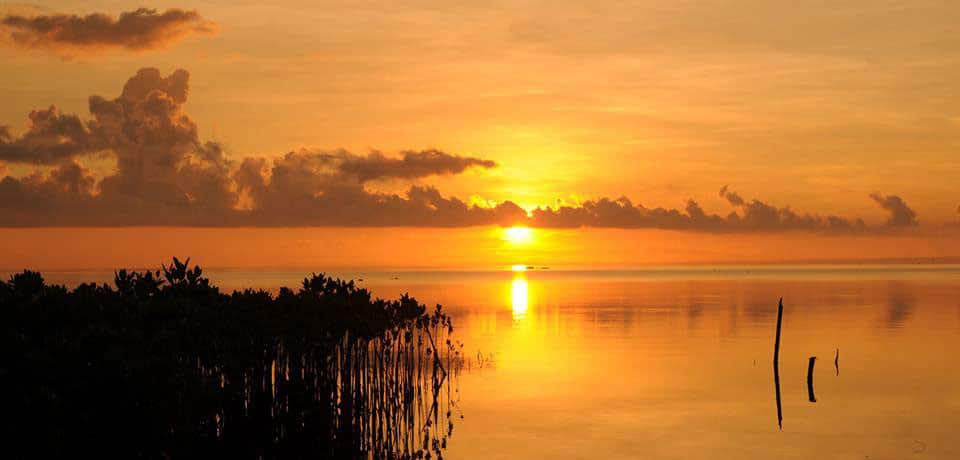Understanding Corallivorous Drupella Snails
Although outbreaks of corallivorous Drupella snails have been increasing across the Indo-Pacific since the 1980s, still very little is known about their reproductive ecology. These tiny snails can occur in great abundance and can contribute to reef decline by lowering the total abundance of living coral and changing the population structure of reef communities.

Tracking these Coral Predators
Conservation Diver has been focusing on Drupellas for some time, with our first observation of the snails shifting their preferred food sources following the global mass coral bleaching event of 2010. Since then, our partners at the New Heaven Reef Conservation Program have collected more than 179,740 Drupella snails from around the island of Koh Tao, with 76% coming from a single bay.
In 2019, a team of our Conservation Diver Trainers traveled to Mauritius for a collaborative research expedition with the University of Mauritius. They were pleased to apply their Drupella snail knowledge to the local reefs and assist published Drupella snail researcher Deepeeka Kaullysing, in recording observations from the area. During their biodiversity surveys, primarily focused on heterobranchs, they noticed a significant deposition of egg masses under mushroom corals in the vicinity of a large Drupella aggregation. Upon closer inspection, they realized they were looking at the largest concentration of Drupella egg clusters ever recorded.
Although the first outbreak of Drupella snails was recorded in the early 1980s, much of what we understand about their life history is derived from similar organisms. Very few publications detail observations of the egg or larval stage of these predators, which is vital to know to mitigate the damage caused by over-populations or outbreaks.
Understanding Drupella Lifecycles
The first recorded Drupella egg deposition was published by Sam et al. in 2016 in an aquarium. This was followed quickly by the first in situ observation in 2017 by Scott et al. and was also the first record of egg deposition on the underside of Fungiidae corals.

The recent Kaullysing et al. (2020) publication is the first record of Drupella egg deposition in Mauritius and the Western Indian Ocean. Additionally, this is the first record of in situ egg deposition on corals other than Fungia. This time, eggs were observed on Fungia, Montipora, and the shell of another Drupella snail.
Furthermore, it represents the highest abundance of corallivorous Drupella eggs ever observed, with 5,020 egg bundles on a single coral (each bundle contained approximately 96 embryos).
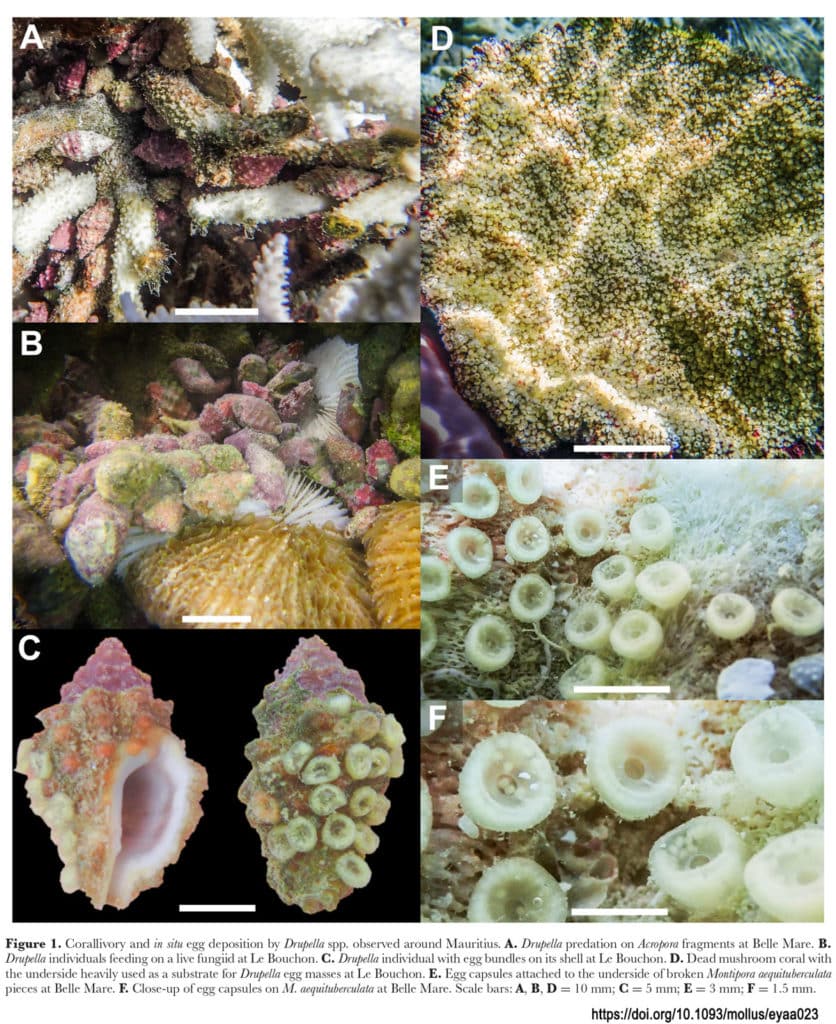
Observations such as these are vital to the understanding of the ecology and life history of these cryptic species. Only 40 years ago, they were essentially unheard of, yet today they are seen as one of the Indo-Pacific's significant problematic coral predators.
Stopping Outbreaks of Drupella
To halt outbreaks and mitigate their damage, reef managers must understand the details of their life history. By targeting benthic egg cases for removal rather than the adults, much time and resources could be saved.
The program on Koh Tao has been working for a decade to remove nearly 180,000 adult snails, whereas removing just the observed corals in Mauritius could potentially prevent the dispersal of 1.6 million embryos (4 corals x 5,000 egg bundles each x 80 embryos per egg bundle).
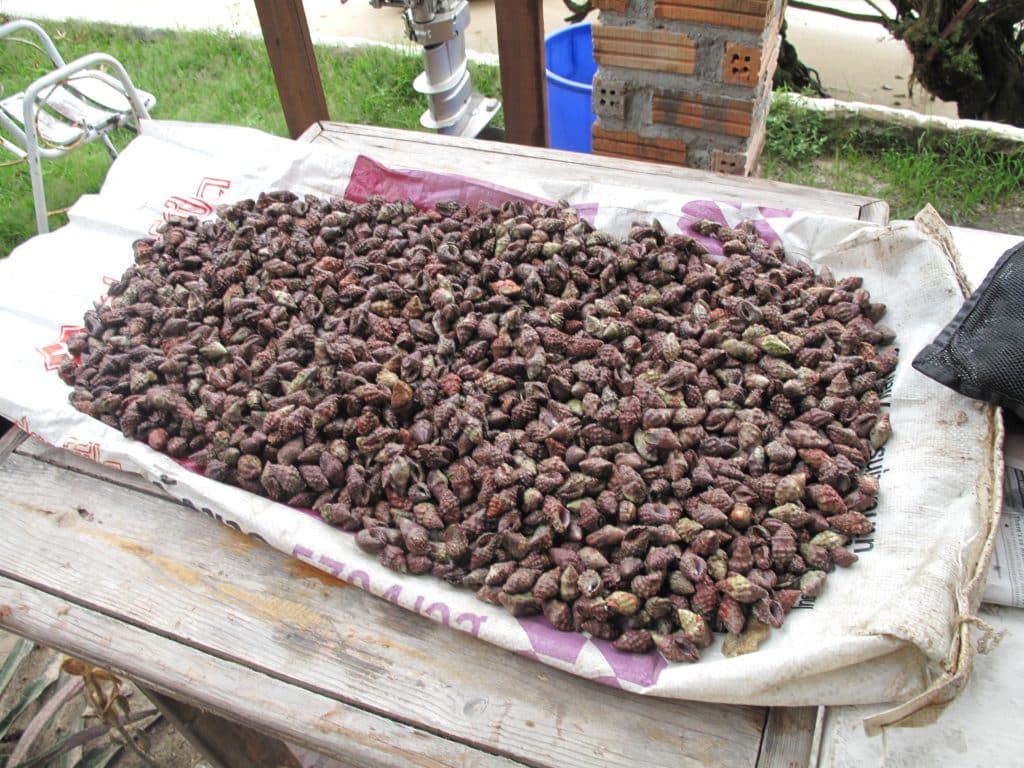
This is a very important publication for the advancement of this field and surely will be one of the stones placed on the path to better understanding and management guidelines for these pervasive coral predators. We wish our sincerest gratitude and congratulations to all of the authors, but especially those on the Conservation Diver team; Rahul Mehrotra, Spencer Arnold, Alyssa Allchurch, and Elouise Haskin.
Be sure to check out the paper here
A New Record of Heliopora Coral
Until recently, it was thought that the genus Heliopora was monotypic, with the only species described as Heliopora coerulea. However, that is quickly changing, and the Conservation Diver team is helping to increase records around the Indo-Pacific. Our finding represents the second hermatypic octocoral we have discovered in previously unknown locations, after Pau Urgell found the very rare coral Nanipora on Koh Tao in 2014.

A Reef-Building Soft Coral
Heliopora is an octocoral (mostly soft, non-reef building) however it is hermatypic, meaning that it is a reef builder. This genus is unique in that the skeleton has a blue coloration derived from the iron salts in its fibrous aragonite matrix.
This species can be traced back more than 120 million years to the Cretaceous Era and has remained mostly unchanged since. It was only in 2018 that the first records of a second species of Heliopora (H. hiberniana) was described, and only from 3 locations in Western Australia. But even then, it was hypothesized that this cryptic species could be more widespread.
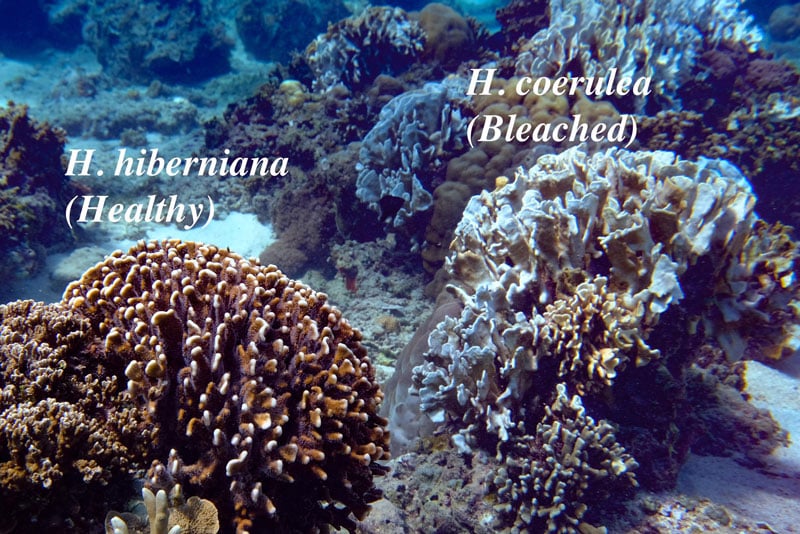
Whilst working on coral nurseries in the Maldives, Conservation Diver Board Member and head of Conservation Diver Indonesia, Leon Haines noticed a Heliopora colony that did not match any seen in the guide books.
After a quick online search, he stumbled upon the newly described species and contacted the scientists with a photo to confirm his suspicions. Indeed, it was a colony of H. hiberniana over 6000 km from the area it was originally described to science!
After his time in the Maldives, Leon returned to Indonesia where he subsequently noticed H. hiberniana to actually be one of the most common reef-building corals in the Gili Islands! After working with other researchers, he published the first record of H. hiberniana outside of Australia, this time both in the Baa Atoll, Maldives, and the Gili Islands of Indonesia.
Heliopora on Future Reefs
This is a significant find, as in the future, non-scleractinian hermatypic corals may be forced to play a more prominent role in sustaining the structure of coral reefs around the globe.
These octocorals seem to be less susceptible to warming climates and coral bleaching events and may provide an alternative structure to the historic hard coral species which built them. These records are also vital to tracking the effects of climate change as the historic home ranges of various species are altered due to changing ocean conditions and can help us to predict where conservation and protection efforts will be the most effective.
We extend our sincerest congratulations to Leon for this publication and are excited to see how we can contribute to the development of the understanding of this species in the future.
Helping to assess reefs around the globe
The programs and courses offered by Conservation Diver were originally developed alongside local reef managers in an effort to increase the effectiveness and financial sustainability of their valuable work. Increasingly, the protocols and techniques developed under the Conservation Diver syllabus have been applied to promote or improve conservation strategies at various scales in several countries, such as to assess reefs in areas of need.
Last month, research director Rahul Mehrotra and a team of Conservation Divers published their third study, in which skills taught through our courses were applied to promote informed conservation decisions. This time assessments were requested by the government of the Escalante region of the Philippines, including a Marine Protected Area (MPA) that was established 15 years prior. This is the third such expedition Rahul and the team have undertaken and published, and is invaluable for the local governments to assess the actions already taken, and direct the policies that will decide the future fate of the areas and their resources.
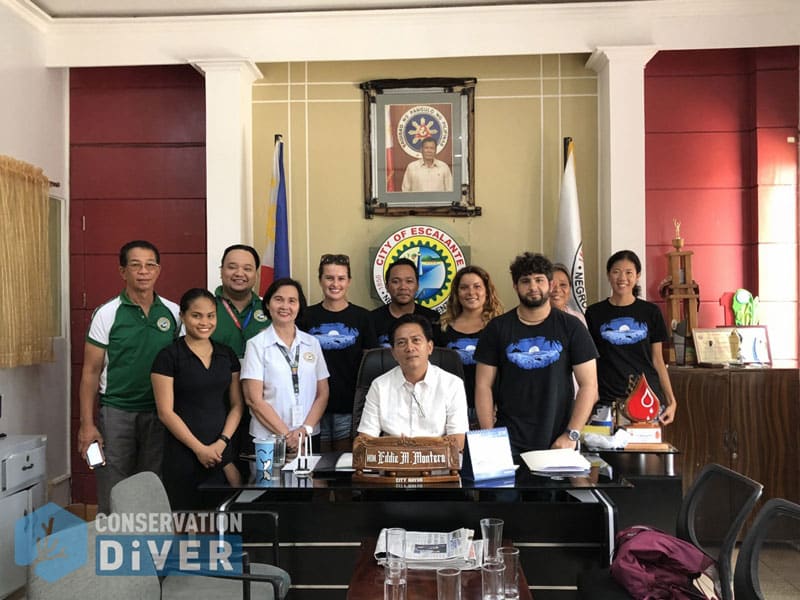
The project was supported and carried out in collaboration with our partners at the Love Wildlife Foundation and the University of the Philippines, Cebu. The researchers involved were all trained and certified in Conservation Diver monitoring and data collection techniques, and were thus more than proficient and prepared for the job at hand. Most of the surveys were carried out using SCUBA equipment while diving in coral reef and muck habitats, but additional surveys were also carried out by snorkeling in mangroves and sea grass beds, and by visiting local fish markets.
The team was able to identify and record more than 700 species during the surveys in Escalante, including 191 species of fish, 227 species of cnidarians (corals and related animals), 120 species of mollusks, 58 species of echinoderms , 40 species of crustaceans, and 27 species from the Platyhelminthes phylum (flatworms and their relatives). These findings provide indications that the marine habitats of the area are highly biodiverse, but evidence was also provided showing that they are in dire need of increased protection and enforcement of existing regulations.
Hard coral cover was generally considered ‘fair’ (as most of the country’s reefs were in previous studies), ranging from 16%-66%, with most sites surveyed having coverage greater than 30%. The team was also excited to record coral spawning during the surveys, observing gamete bundles released from both Montipora and Lobophyllia on March 7th. They then witnessed sea urchins and clams spawning during a daytime in a mass event occurring one week later, on March 14th.
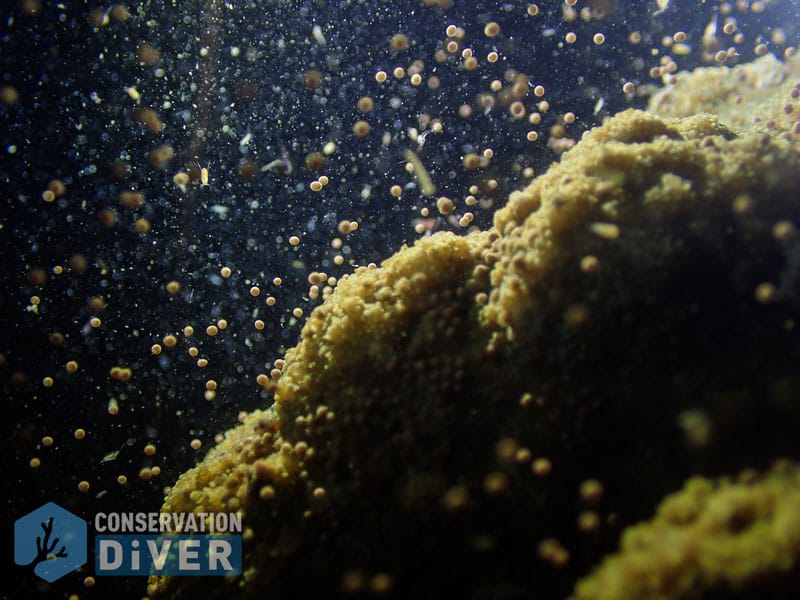
The data collected during all the various surveys was used to write a report in order to advise policy changes for the local government. Those changes included zoning to protect the most valuable areas, but still allow for regulated commercial use in order to sustain local economies and livelihoods. It was recognized by the authors that the current MPA’s regulations and enforcement make it ineffective at achieving the original goals as set out 15 years ago. The paper recommended broader participation in decision making and enforcement of the regulations, requiring more stakeholder education and participation. The team also recommended some areas be designated for responsible tourism in order to provide alternative, non-extractive revenue streams for the local communities. Lastly, the authors recommended infrastructure additions such as mooring lines to reduce incidences of anchor damage to the delicate reefs.

This study is something which we at Conservation Diver are quite proud of, not only for its potential impact on policy and sustainability of the reefs in the region, but as a proof of concept of our training system. The thousands of certified students that have been through our programs are proof that there is demand for this type of training; and our success on the local scale, such as on the island of Koh Tao, has proven that we are able to make a tangible difference through the active participation of trained divers as well as create sustainable funding streams to ensure the success of long-term monitoring, protection, and restoration projects. But this expedition in particular also shows that there is a wider application to our methods and techniques that can be utilized to advise governments around the world to make science-based decisions uniquely established for their region, local communities, and customs. We hope to send out more teams on expeditions like this in the future to assess reef health, create more collaborations with local universities and governments, and help to fill in the gaps between those two groups. In doing so, we think that we can create an effective nexus that can realize tangible positive changes in the way that we manage and use our finite reef resources and ensuring that these ecosystems persist and thrive
Download the full report here

A New Species of Coral-Eating Nudibranch
A new species of coralllivorous nudibranch has just been discovered by our friend and colleague, Dr. Rahul Mehrotra. The new species, which he named Phestilla viei, was described in a recent article in the journal Marine Biodiversity, titled “A new species of coral-feeding nudibranch (Mollusca: Gastropoda) from the Gulf of Thailand.” Not only does this paper provide record of this new species, but it also helps to clarify the systematics of the genera, which currently contains 8 coral-feeding species that have been revised several times over the last few decades.

This study was conducted as part of Rahul’s PhD, which has yielded several other impressive firsts for the world of sea slugs, including the observation that there are corals which feed on sea slugs, as well as three other first records of species found from Koh Tao; including Unidentia aliciae in 2019, as well as Arminia occulta and Armina scotti in 2017.
The new species, Phestilla viei, was first found on the island of Koh Tao, Thailand by Conservation Diver board member, Spencer Arnold, who was a co-author on the paper. He found the first individual on a coral of the species Pavona explanulata, a resilient coral species which is becoming more prevalent on the island as it replaces some of the less robust species in the face of climate change and localized anthropogenic stresses. The novel species was named after local nudibranch enthusiast and citizen scientists, Mr. Vie Panyarachun, well known for his vast contributions in recording and curating sea slug records from Thai waters.
After the first observation, Rahul and his team conducted a series of surveys to locate more individuals and evaluate their ecology, anatomy, and genetics. All of the individuals found were on the same species of coral, implying that they are an obligate parasite of the sceleractinian, Pavona. Because of this obligate relationship, the morphology of the nudibranch is such that it closely resembles the coral, making it very difficult to find. Rahul and his co-authors stated in the paper that the easiest way to find them is to actually look for the feeding scars and egg trails, and then to look for the individuals making them.
Another amazing trait which makes this cryptic species so difficult to observe is that it actually ‘steals’ symbiodinium (the unicellular algae which power the coral) and integrates them into their bodies rather than digesting them, in a process termed “kleptosymbiosis.” Although this species is a corallivore, it does not appear to be a major threat to coral populations, as it was never observed to eat the entire coral, and no overpopulations or outbreaks have been documented.
Although this was the first scientific description, observations of the species have been made in other parts of the Western Pacific, including Indonesia, Madagascar, Papua New Guinea, and the Philippines. Now that more divers know about this species, and where to look for it, surely it will be observed in many other countries over the next few years.
After reading the article, we had some questions for Dr. Mehrotra, so we interrupted his work to interview him about his findings and current projects.
Q1: This is a very interesting finding, when did you first become aware of these species, and how did you first spot it?
I came across reference to a similar species in a couple of references, however with very little corresponding information. After finding a paper documenting this from Hong Kong feeding on Pavona decussata, I considered the possibility that we may have this on Koh Tao. The truth is, I simply needed to share this paper with Spencer who used his remarkable skills in a matter of weeks to find a similar species feeding on a different prey at Koh Tao.
Q2:As this is the fourth new species you have described for the region, do you think Koh Tao is a particular hotspot for sea slugs, or do you expect other regions in the Gulf to have similar levels of biodiversity?
This is the fourth species of nudibranch to be described from Koh Tao, which has indeed been the home of much of the sea slug research from Thailand over the past decade. However, our data from other locations suggests that, while Koh Tao does seem to offer a diversity of species distinct from what is commonly found elsewhere in the Gulf, the richness of discoveries is largely due to the focused study in the area. Many places in Thailand appear to host species that are awaiting a closer investigation.
Q3: You named this nudibranch after Mr. Vie Panyarachu, how has he influenced your work over the years, or the status of nudibranchs in Thailand in general?
Vie Panyarachun is a keen recreational diver and naturalist who has played a remarkable role in curating records of sea slug diversity in the country. His work as a citizen scientist has helped create a repository of species as well as playing an active role in sharing the world of sea slugs with the SCUBA diving community in Thailand.
Q4: why do you think it is important that populations of nudibranchs in the region are recorded and monitored?
Nudibranchs and other sea slugs have been shown to play a variety of roles economically and ecologically, however few of these have been investigated thoroughly. Monitoring sea slug diversity has already led to remarkable documentation on the hidden impacts of climate change and species invasions. The importance of monitoring sea slugs in the Western-Pacific, home to the most biodiverse marine environments in the world, allows us to dig deeper into the complex ecology of the region. In a time where hundreds of invertebrate species are known to have been regionally displaced or gone extinct only to be discovered/rediscovered after the fact, detailed monitoring of such understudied groups may allow us to catch large scale threats before they take hold. Many sea slugs have been associated with very specific prey organisms, and thus the fate of any given species is also intricately tied to the resilience of its prey. The species we describe here for example has been found exclusively on a single species of coral, with similar species of coral either hosting their own distinct species of nudibranch, or none at all. Many reef building corals such as the prey of P. viei are susceptible to threats such as coral bleaching. We have little evidence at present to suggest that populations of P. viei would could show enough dietary plasticity to shift hosts to a more resilient prey should these threats escalate.
Q5: What are you currently working on, or towards, regarding sea slugs in Thailand?
I am in the process of completing my work from Koh Tao, documenting further ecologically relevant observations. My work on sea slugs will be transitioning to other fields soon too, so as to provide a more solid framework for further research on sea slug biology in Thailand.
We want to pass our sincerest congratulations to Rahul for this valuable and important work, and wish him all the best in his future ventures, which we follow very closely and support in any way we can. We also want to congratulate Spencer Arnold on his find, and his invaluable assistance to this study, he has an eye for finding tiny sea slugs like no one else. We also want to congratulate Mr. Vei on the species being named for him, and for all his contributions to the field over the years.
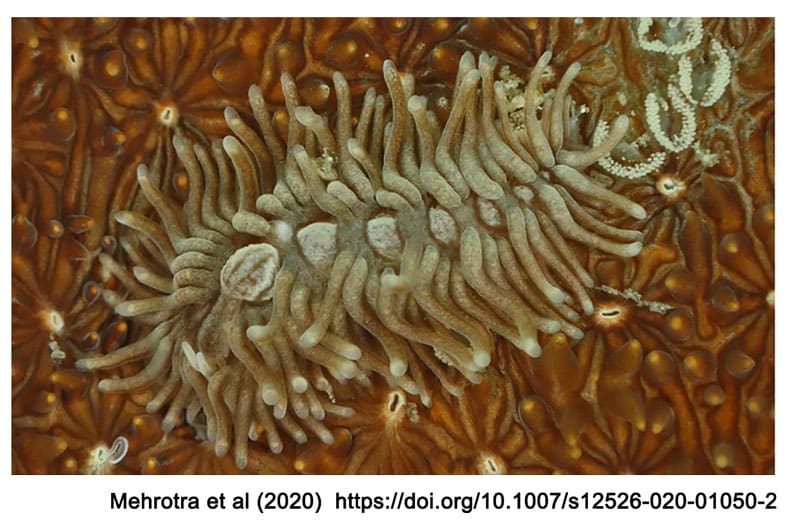
Coral Diseases & Compromised Health Monitoring
Coral Diseases & Compromised Health Monitoring

The Coral Disease & Compromised Coral Health Monitoring course is a prestigious certification card for those students who are able to complete all aspects of our Ecological Monitoring Program, and Coral Taxonomy and Identification in theory and practice. When performed to a high level of proficiency, coral health assessment can be incorporated into the surveys. This card recognizes your ability to identify all states of coral health, and contribute to coral disease and overgrowth monitoring, and research.
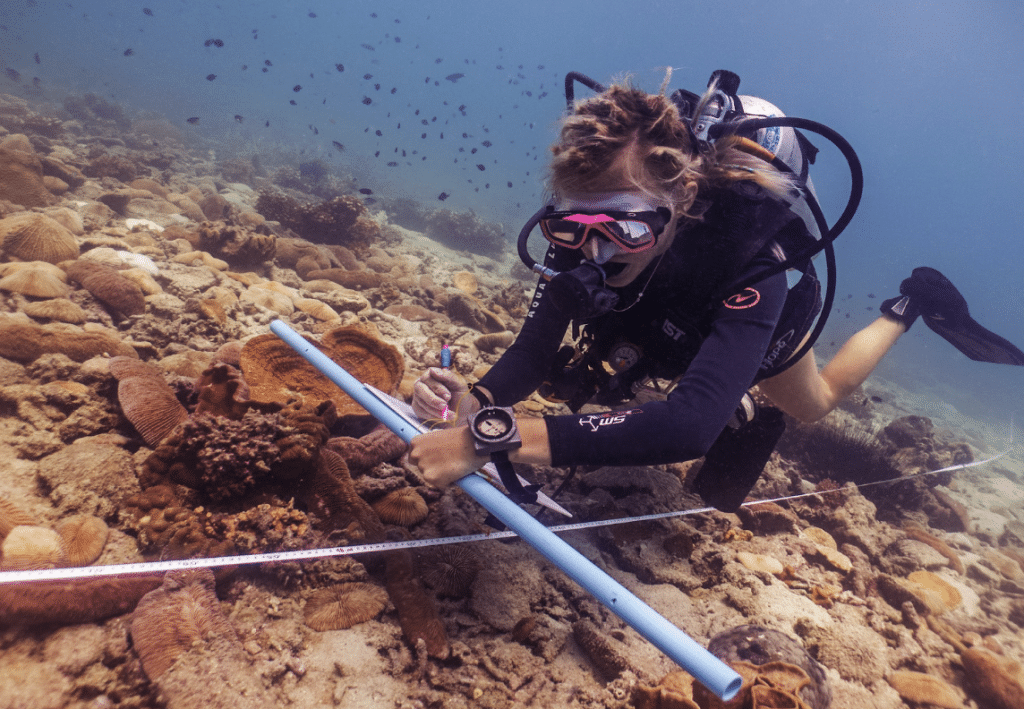


Prerequisites
- Be 12 years of age or older
- Be certified as an Advanced diver under a leading diving organization (PADI, SSI, RAID, etc) or an Open Water diver who has satisfactorily completed a buoyancy appraisal with a professional diver
- Demonstrate proper diving ability at an advanced Level and be proficient in buoyancy and self-awareness
- Be certified in our Ecological Monitoring Program
- Be certified in our Coral taxonomy & Identification course
Standards
- Understand how predation,
competition, and parasitism play a role in the structure and population
dynamics of the coral reefs - Be Proficient in various survey
techniques used by reef managers to monitor the health of coral reef ecosystems - Be able to identify various
common coral disease of the region - Be familiar with, and able to
identify common causes of coral mortality or compromised health states
Requirements
- Attend the Compromised Coral
Health Assessment and Monitoring lecture and any related knowledge building
sessions - Read and complete the chapter
reviews for the Coral Disease and Coral Bleaching Chapter of the Ecological Monitoring
Manual - Complete and pass all the
written exams for the courses listed above (80% and above) - Complete and pass the written
exam for the Compromised Coral Health and Monitoring course - Successfully perform at least
one Coral Disease and Comprised Health Monitoring Survey - Complete data entry, in the
form of hard copy data sheets or the online database, as required
Approximate course time is 8 hours, with at least 1 dive
Certification Card
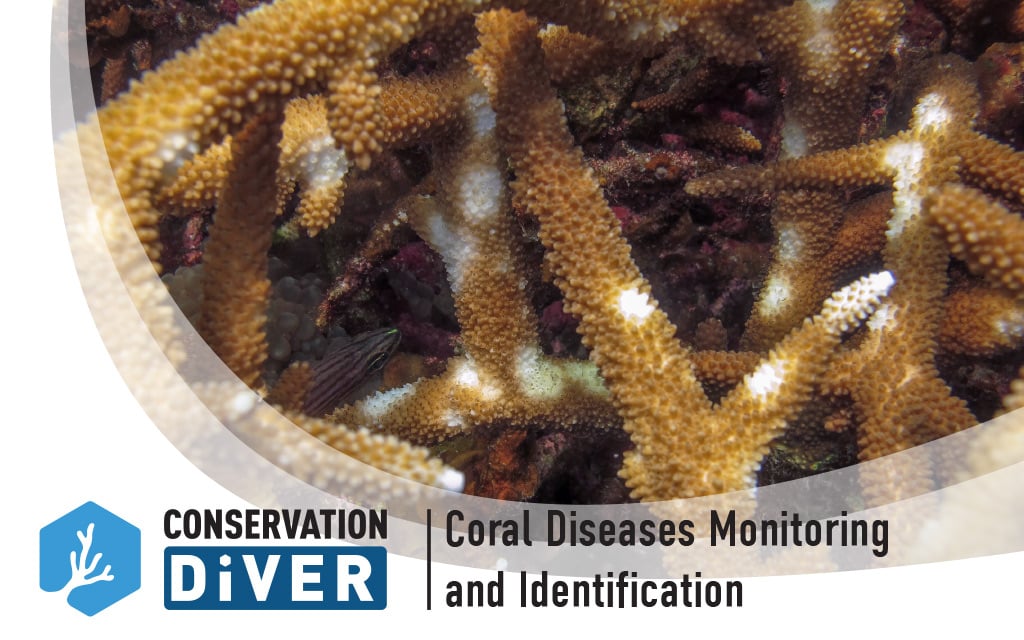
Training Centers
- Indonesia - Blue Marlin Conservation
- Thailand - ATMEC
- Thailand - Black Turtle Conservation
- Thailand - NHRCP
Cigarette filters now the top source of marine debris
By now we have all heard about how plastics and marine debris are chocking our oceans and killing marine life, but do you know what the number one source of this debris is? Recent studies have shown that the primary item littering our beaches and oceans are cigarette filters. In fact, it is estimated that 4.5 trillion filters are littered to the environment every year, totaling more than 750,000 tons. Studies have found that globally there are about 3.5 cigarette filters per every square meter on our beaches. This is not only unsightly and disgusting, but it is also toxic to aquatic organisms, and is destroying the base of many marine tropic structures.
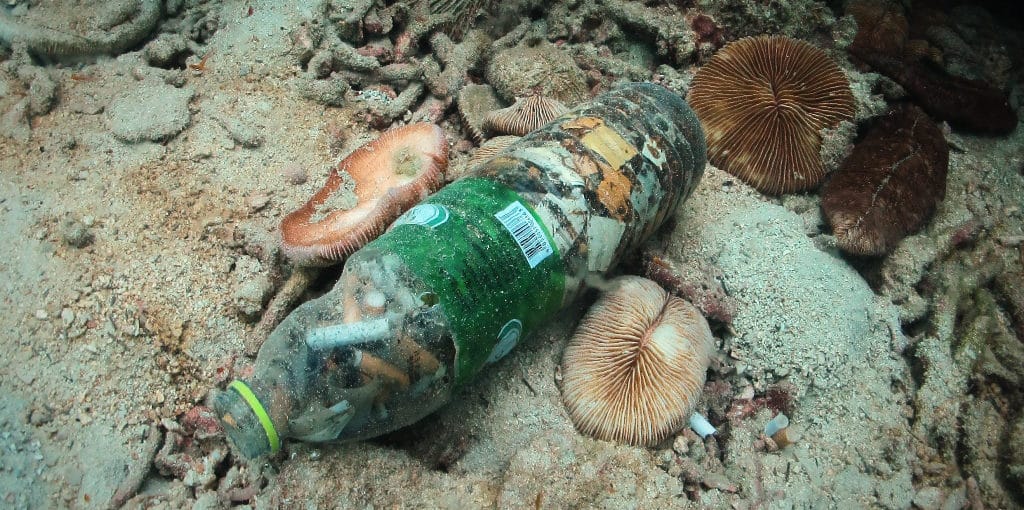
What’s wrong with Cigarette filters?
Cigarette filters are primarily made of a plastic fiber called cellulose acetate (95%), mixed with a semi-synthetic fiber called rayon. Each cigarette contains more than 15,000 of these fibers. They are not readily biodegradable, and in the marine environment can persist for over 10 years. As they break down, they become smaller and smaller pieces which are called microplastics, and are readily consumed by all animals. A study by the University of Plymouth looked at deep sea marine sediments (3,500 meters deep), and found that there are about 4 billion of these fibers per square kilometer. These deep-sea marine sediments form the largest habitat on the planet, and they are filling up with plastic. But its not only the plastic fibers that scientists are worried about when it comes to cigarette filters, its all the contaminants they carry with them.
Cigarette filters are toxic
When a cigarette is smoked, the filter absorbs over 400 different chemicals, including heavy metals and nicotine. Nicotine is a neurotoxin, which greatly affects the behavior, growth, and survival of many organisms exposed to it. When filters are littered, the nicotine and other chemicals then leach out of the filter and contaminate our waters. Water flowing out of urban areas contains around 60 times the concentration of nicotine that is needed to affect freshwater and marine worms. Each cigarette contains between 0.8–1.9 mg of nicotine, and just 1 filter can contaminate 1,000 Liters of water above the ‘no-effect’ threshold. A 2011 study looked at the effect of the leachate filters on freshwater and marine fish, and found that the LC 50 (the concentration at which half the fish exposed would die) was “approximately one cigarette butt/L for both the marine topsmelt (Atherinops affinis) and the freshwater fathead minnow (Pimephales promelas).”
Cigarette Filters are Killing Marine Worms
Another study from 2015 has looked at how these filter fibers and the chemicals leached from them are affecting marine worms. Marine worms are one of the planet’s most important organisms as they form the base of the world’s largest food web, and also impact water column processes, and global biogeochemical cycles. The study looked at Ragworms exposed to filters and their leachate, and concluded that “Ragworms exposed to smoked cigarette filter toxicants in seawater at concentrations 60 fold lower than those reported for urban run-off exhibited significantly longer burrowing times, >30% weight loss, and >2-fold increase in DNA damage compared to Ragworms maintained in control conditions.” These are highly significant findings, because essentially if these worms die-off, so do our oceans.
Let's stop this now!
Cigarette filters are the world’s number one source of
marine debris. They act as a vector for the “transport and introduction of
toxicants, including heavy metals, nicotine and known carcinogens, to aquatic
habitats.” Urban areas far from the ocean are the leading contributor to this problem,
as the microfibers and leachate from them gets into water ways and flows to the
sea, contaminating the coastal areas and remote deep-sea areas alike.
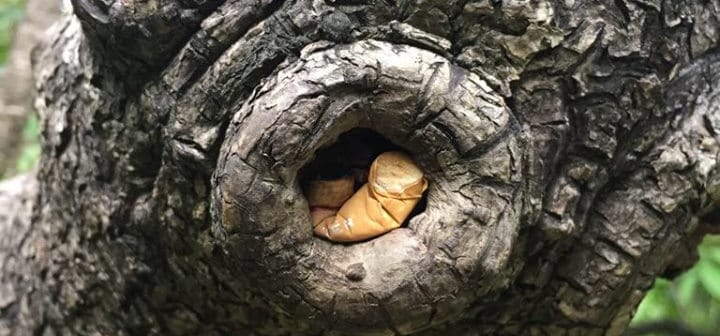
This is a problem which should not exist, as there is no valid excuse for it. The first thing that needs to change is human behavior, people need to understand that these filters are not a bio-material, and do not readily breakdown in natural environments. Second, the companies that produce these filters need to be held accountable. They have long known the effect that they are having on the environment, and the fact that the filters have been shown to be ineffective at removing toxins, tar, or carcinogens from the cigarette smoke. Their primary function is just to keep tobacco from the mouth of the user, and to give a solid mouth piece from which to smoke. They are also cheaper than tobacco and help to make the product look larger. More environmentally friendly and effective materials have been proposed, but they cost more and are thus ignored by the industry. Well, its time we all stood up and stopped ignoring this issue before it destroys our oceans, and us with it.
Corals Have Evolved to Eat Sea Slugs
Hard corals are generally thought of as autotrophs, or organisms which produce most of their own metabolic energy and contribute to the base of the food chain in the ecosystem. Although most reef-building corals do feed on plankton, they meet 75-95% of their energy demands by harvesting symbiotic micro-algae within their tissues, and are thus getting their sugars and carbohydrates indirectly through photosynthesis. However, this view of corals is currently in debate, and it looks like a more diversified diet could be utilized by some corals to meet their daily energy demands. This has been the study of Conservation Diver Instructor and Board Member, Rahul Mehrotra.
Investigating what corals can eat
Initially, Rahul showed back in 2015 that Heteropsammia corals used their large mouth size to opportunistically consume salps during seasonal blooms. This was observed In Situ on several occasions in the ‘muck’ areas around Koh Tao, and documented in the journal Marine Biodiversity. By chance, a student of the New Heaven Reef Conservation Program, Joel Rohrer observed a mushroom coral ingesting a sea slug during a coral reef survey, and alerted it to Rahul’s attention. From that single observation, investigations began into the question, “Are reef building corals actively feeding on sea slugs for additional energy?” A question which would take 4 years to investigate.
Experiments were devised as a series of both in situ and ex-situ trials to test his hypothesis, which was that corals take advantage of their proximity with Sacoglossan sea slugs and their large gape to facilitate heterotrophy. The experiment looked at several factors, the size of the coral, the size and species of the sea slug, and the likelihood of ingestion. He used aquarium feeding trials to test whether or not it was even possible for the mushroom corals to capture, transport, and ingest the slugs, and looked at the rate of rejection based on slug size and species. Following those trials, he also performed field tests to ensure that this adaptation was actually going on in the wild populations.
The study’s conclusions
Based on 240 trials, it was concluded that prey species and prey size are the greatest factors in successful predation of sea slugs by corals, rather than the type or size of the corals themselves. Of the six species of prey slugs tested, consumption rates were highest for species of the genera Costasiella and Elysia, with significantly less success when attempting to ingest those of the Plakobranchus genus. Additionally, when these sea slugs were rejected after consumption by the corals, the slugs were covered with a mucus that is thought to be a defensive mechanism by the corals to prevent damage caused by the slug’s defensive measures.
What this means
Rahul’s work has helped to expand the way we think about coral feeding behaviors, as well as their place in the trophic structure of reefs. We now know that they feed on large plankton (salps and small jellyfish) in addition to the nearly microscopic prey they have always been known to. Furthermore, we now see that they are actively feeding on benthic organisms, not only those floating in the water column. This may be an adaptation to increase the amount of energy they receive from heterotrophy to allow them less reliance on their symbiotic algae, or as a way to gain beneficial micro- and macro-nutrients that could be essential for their growth and development. Additionally, the data adds to the incredibly sparse understanding on predators of sea slugs (which are all toxic) and overall ecology in tropical reef habitats. As these new observations are investigated further, we are sure they will yield some more surprising and exciting information which will continue to modify our views of this very important class of reef organisms.
The full paper is available free of charge from the publisher's website
Conservation Divers Discover Rare Coral on Koh Tao
Conservation Diver Trainer Pau Urgell recently made a pretty important discovery during an Ecological Monitoring Program survey - a rare species of soft coral that seemed to be making a skeleton. Pau knew that hard corals have tentacles in multiples of six, and soft corrals in multiples of eight, so something was not right when an eight tentacled coral was encrusting over the rocks and clams. Getting back to the office, he tried and tried to identify this strange Octocoral, to no avail, until, with some help from the rest of the team, they discovered it was a very rare species in the genus called Nanipora, which previously has only been observed in one small location in Japan.
Over the next few months, Pau and others worked to get more data on this strange coral, collecting samples for analysis and mapping the range of the colonies that could be found around the EMP line in Hin Wong Bay, Koh Tao. Through that process, another amazing discovery was made, this coral contained zooxanthallae, the symbiotic algae that hard corals use to make their calcium carbonate skeleton.
The results of all these findings have been written up in the Journal of Marine Biodiversity, which you can find here. This goes to show how careful observations, combined with good science, can yield exciting new information. For now, we will continue to enjoy seeing this rare species of coral, knowing that there is only one place other than Koh Tao where it exists.

Fig. 2 Colonies of Nanipora coral. a Close-up lateral view of polyps with view of pinnules. View of skeleton and calyces with polyps retracted. c Edge of laminar growth as viewed through a low magnification microscope showing pores and granular pigmentation. d Magnified view of extracted Symbiodinium (Urgell et al. 2017)
Conservation Diver returns to the Philippines, April 2017
Conservation Divers Rahul Mehrotra and Spencer Arnold returned to the Philippines in 2017 to continue the research and ecological consultancy work from the initial assessment in 2016.
The small and rural municipality of Toboso has historically been a fishing and agriculture driven community for many decades. Recent years have shown heavy declines in fish stocks. As part of broader national incentives and to assess the coastal ecosystem and fishery health, the local NGO, Worldreef Toboso, has been working with the local government to create an MPA and zonation plan for the area.
[su_slider source="media: 400,399,398,397,396,395,394,393" width="260" height="260" speed="1300"]
Conservation Diver was invited to carry out the local assessment and research to promote the local conservation efforts. The 2016 assessment found that though the coral reefs, mangroves and seagrass habitats appeared healthy and abundant in places, the vast majority of fish diversity and adult fish abundance, was absent. Additionally it was found that the presently proposed MPA failed to protect most of the healthy and diverse reef ecosystems, and instead covered sparse and degraded habitats. The full 2016 report can be downloaded here.
This year, Conservation Diver Trainers returned to the area to provide scientific evidence for the proposed extended MPA area, while also conducting further assessments of the local fishery. The 2017 Toboso project concluded with more data collection from both the original and the newly proposed MPA locations yielding some fascinating findings. Additionally, deeper EMP transects were carried out throughout the coastline. These deeper surveys showed that what was left of the adult/larger individuals of the key ecological fish species were to be found at the deeper extent of high-abundance coral reefs. Presumably, the challenges to fisherfolk kept these deeper areas as effective refuges.
A greater focus was applied also to the algal diversity at Toboso in the second week. Though the data analysis for the findings is still very much in its early stages, it is believed that this years work is likely to have added a further 100 or so species to the 400 established thus far. Finally, the trip concluded with a meeting with the Mayor and a number of the governing staff of the nearby municipality of Escalante, with potentially exciting developments for a 2018 expedition.
The next several weeks will be spent analysing the mountain of data collected during the expedition to produce a new, updated report to the highly successful report from 2016.
[su_slider source="media: 410,409,408,407,406,405,404,403,402,401" width="260" height="260" speed="1300"]
Conservation Diver in Toboso, Philippines, July 2016
Toboso is a rural area in the province of Negros Occidental with almost no prior marine habitat usage outside of fishing. In July of 2016, Conservation Diver Trainer Rahul Mehrotra joined the "Worldreef, Toboso" organization to assist in expanding the baseline knowledge of biodiversity in the area and conduct preliminary assessments of the habitats in the vicinity of the MPA.
Much work had already been conducted by Worldreef in initiating and processing the MPA, working closely with the local governmental authorities. Yet, a large number of criteria were still required to maximize the case for the creation of the MPA, and surrounding Marine Reserve.
The job of Rahul, first and foremost, was the establishing of an accurate database of flora and fauna in the area. An assessment and broad management plan of the habitats in the area was carried out according to the methods covered in the Conservation Diver courses.

Much talk had also gone into the economic aspects and opportunities of the MPA and surrounding zonation, including particular work with the Department of Agriculture and other independent groups regarding fisheries management and restocking opportunities. Focus is also being put on attractive species to tourism with what is available in the area, which has proven to be a challenge given the severe over-fishing the region has faced.
After a few days of focus on biodiversity assessment and taxonomic restructuring of the known database, the team at Toboso focused efforts on conducting transect surveys to assess the health and diversity of reefs in the area.
The transect methods were adapted from the Conservation Diver syllabus to address key focal points in the area. These were to identify species key to the 3 main goals of the assessment, ecological value, economic value (fisheries), and potential economic value (tourism).
Substrate surveys indicated that certain key areas show high diversity and relatively high coral cover, for the area, with some places showing over 40% coral coverage. A number of the corals deeper than 3 meters had shown recent signs of bleaching stress, with isolated pockets of bleached and diseased corals, but largely looked healthy. It is likely that the worst of the bleaching to hit these reefs occurred weeks to months prior to these surveys being conducted, and with the start of the cooler rainy season in the area, we hope the remaining corals get some relief from their ordeal.
Invertebrate and Vertebrate surveys looked far less promising, with very little sign of large fish life or diversity. Overfishing in the area over multiple years has led to a severely understocked fishery with only 3 individual fish larger than approx 30cm, being witnessed in over 15 surveys. Thats 3 fish, total. All others are juveniles or small species and diversity is deemed to be lacking.
Invertebrate surveys agreed with findings of the vertebrate surveys in that any organisms with fishery value appear to have been fished to near eradication. Key examples are the Giant Clams and Sea Cucumbers, both of which show severe depletion at all locations. A total of 3 giant clams were witnessed in all surveys, and all were at depths greater than 3 meters. Based on internal discussions, the precise location of these clams will be withheld to promote their survival

To conclude on a positive note, only a single transect saw signs of Crown of Thorns, with 3 being found along a 50 meter line. The current view of the ecosystem is one of possible high diversity and health, but would require strict and immediate measures to be put in place to allow the fisheries to recover. Patrol boats have been acquired for the use of monitoring the MPA area when it comes into effect, which should assist in the enforcement yet to come. The marine environment, and all its ecosystems here at Toboso shows incredible potential but requires a lot of help and restoration to reach that potential.
A glimpse of the past and a look to the future of the coral reefs of Toboso.
The research and conservation carried out at Toboso during this expedition has concluded yielded a report of findings in due course. During the final week of the expedition, a number of key events took place that provided evidence for the dire need for restorative work to be carried out at Toboso, and the possible beginnings of a future regular collaborative effort.Much of the time in the final week had been spent compiling and analysing data on the health, and importantly, location of much of the reefs in the region. This data additionally resulted in a number of key, important records to add to the growing list of species recorded from the region.
During the proposition of the MPA, a number of local and regional authorities demanded a minimum species inventory of 100 species to qualify the region for an MPA. The source of this rather absurd figure was never found, but regardless, the team has since catalogued a total inventory of 3 times the minimum value, reaching well over 300 species, with many more to be recorded.
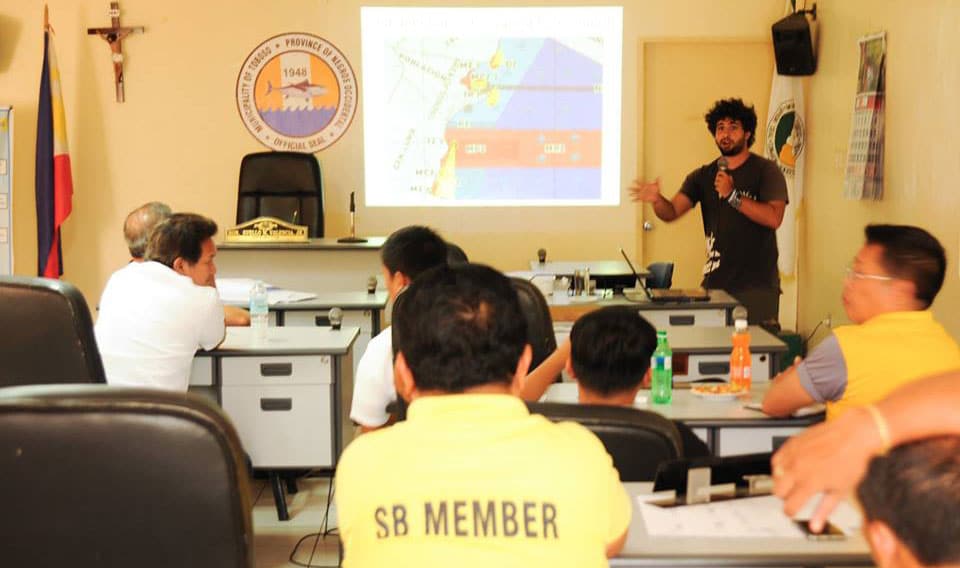
A presentation and meeting with the local municipality and number of stakeholders by the Conservation Diver team was largely deemed to be a resounding success with much discussion and agreement on the need to alter current practices and amend MPA proposition as it currently stands. Full details can be found in the report.
During surveys in the local area, a large fish trap and cage was found showing limited success and arguably more harm than good. This particular trap was found less than 5 meters from the edge of the local coral reef, and represents a common practice in the region. Relative to other methods used in the Philippines, this method has the potential to be far less disruptive, however location and implementation must be reviewed in an area where edible fish stocks have been almost completely depleted. Given the enormous size of the local 'menu', this poses dire consequences for local fisheries.
Finally, 48 hours prior to departure, the team was contacted at dawn about a large sunfish (Mola mola), that had been incidentally caught and had unfortunately perished in the net during attempts to free it. The large oceanic fish has not been seen or landed in Toboso for a number of years, and further hints at the problems of insufficient infrastructure to manage such issues.
The official report is publicly available and will hopefully help to promote tourism activity over fishing in Toboso. A number of difficult steps are outlined, and need to be realized, if the incredible life and potential of Toboso is to be saved.
"As it currently stands, the marine environment at Toboso is in dire need of effective restoration as much of the life has already been lost, and what is left may soon follow. The environmental and economic gains of this restoration could be substantial, should stakeholders work together to capitalize on it."
[su_custom_gallery source="media: 374,386,376,381,382,384,385,380,387,379,378" width="400" height="400"]

